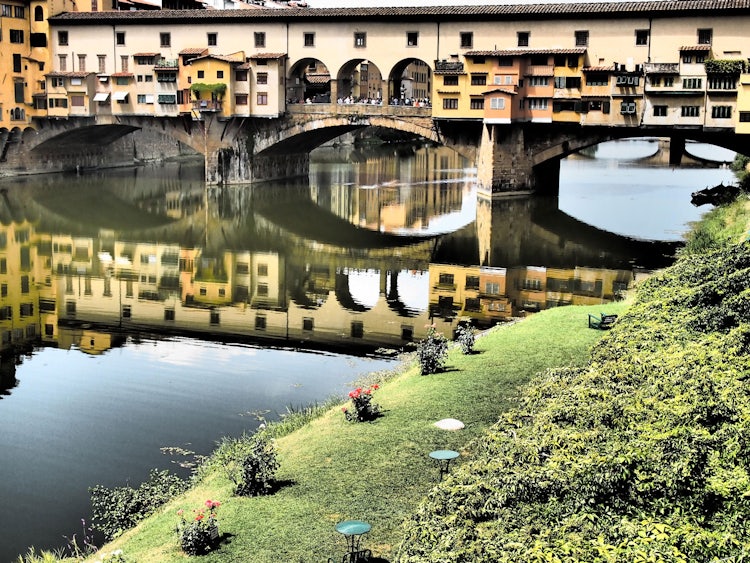Ponte Vecchio is open all the time, situated in the pedestrian zone south of Piazza della Repubblica. It was build very close to the roman crossing. it is also knows as Old Bridge and was the only bridge crossing the Arno river until 1218.
The structure was rebuilt after a flood in 1345 due to a flood. The bridge then went on to withstand another flood in 1966.
It is possible to document the first bridge since 966 and even its reconstruction after the flood in 1345 however, the present construction is a bit of a mystery. Even though Giorgio Vasari, an artist & chronalist from the 1500’s, attributed the bridge to Taddeo Gaddi, the construction seems to point more towards the involvement of the Dominican friars with their keen sense of proportion, harmony and use of numbers. We do know however that the bridge was built as a system of defense, and the windows and artistic elements that we can admire now were added after the shops were sold to the merchants.
There have been shops on Ponte Vecchio since the 13th century. Initially, there were all types of shops, including butchers and fishmongers and, later, tanners, whose “industrial waste” caused a pretty rank stench in the area. In 1593, Ferdinand I decreed that only goldsmiths and jewellers be allowed to have their shops on the bridge in order to improve the wellbeing of all, including their own as they walked over the bridge.
Benvenuto Cellini, a 16th century goldsmith, is honoured with a bust on the bridge. By night, the wooden shutters of the shops create a look like suitcases and wooden chests, making it a very suggestive route to take for an evening passeggiata, or stroll. Ponte Vecchio is a very romantic spot in Florence, with its great views over the river and of the bridge itself.










